#white statuary marble
Explore tagged Tumblr posts
Photo
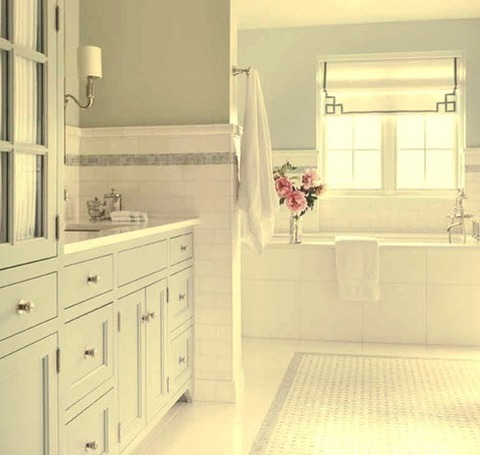
Bathroom Master Bath Los Angeles An illustration of a sizable classic master bathroom with marble countertops, shaker cabinets, an undermount tub, a wall-mount toilet, blue walls, and white and blue mosaic tile flooring.
0 notes
Text
Experience Timeless Beauty with Statuary White Marble. Shop Now at Surfaces Galore
Looking for a white marble to add elegance and luxury to your space? Statuary White Marble is the perfect choice! With its bright white background and bold, flowing veins, this marble brings a refined and sophisticated look to any home or commercial setting.
Whether you're planning a new project or upgrading an existing space, Statuary White Marble is an excellent choice for kitchens, bathrooms, floors, and statement walls.

Different Applications of Statuary White Marble
1. Stunning Kitchen Countertops A Statuary White Marble countertop instantly enhances your kitchen. The smooth, polished surface adds brightness, while the unique veining gives it a luxurious feel.

2. Elegant Bathroom Vanities & Walls
Turn your bathroom into a spa-like retreat with Statuary White Marble vanity tops, shower walls, or flooring. This marble reflects light beautifully, making small spaces look bigger and more inviting.

3. Sophisticated Flooring
For a classic and timeless floor, Statuary White Marble tiles are a great option. Whether used in hallways, living rooms, or grand entryways, they create a stunning first impression.

4. Eye-Catching Feature Walls & Fireplaces
A marble accent wall instantly adds character and elegance to any room. For a dramatic effect, use bookmatched slabs, where two pieces of marble mirror each other like a butterfly pattern.

How to Style Statuary White Marble

Caring for Statuary White Marble
Marble is a natural stone that, with proper care, will last a lifetime. Here are some tips to keep it looking beautiful:

Seal regularly to protect against stains. Clean with a mild stone cleaner – avoid acidic substances like vinegar or lemon juice. Wipe spills immediately to prevent staining. Use coasters and mats on countertops to protect the surface.
Get Premium Statuary White Marble at Surfaces Galore!
At Surfaces Galore, we offer high-quality Statuary White Marble slabs and tiles for all your design needs. Bring timeless elegance to your home with Statuary White Marble! Explore our collection today!
Call Us: 714-363-1322 Email Us:[email protected] Visit Us: www.surfacesgalore.com
#Statuary White Marble#marble tiles#home interior#interior design#White Marble#shop now#visitourwebsite#surfacesgalore#anaheim california#usa#blog#tumblr#seo#Business#Tiles
1 note
·
View note
Text
Pantry in Chicago

Image of a mid-sized modern galley kitchen with ceramic tile countertops, an undermount sink, flat-panel cabinets, a white or glass backsplash, stainless steel appliances, no island, dark wood cabinets, and marble countertops.
#ceramic tile flooring#dark espresso wood stained#interior architecture#kitchen#opaque white glass cabinets#stainless steel appliances#white statuary marble countertops
0 notes
Text
Pantry in Chicago

Image of a mid-sized modern galley kitchen with ceramic tile countertops, an undermount sink, flat-panel cabinets, a white or glass backsplash, stainless steel appliances, no island, dark wood cabinets, and marble countertops.
#ceramic tile flooring#dark espresso wood stained#interior architecture#kitchen#opaque white glass cabinets#stainless steel appliances#white statuary marble countertops
0 notes
Text
Pantry in Chicago
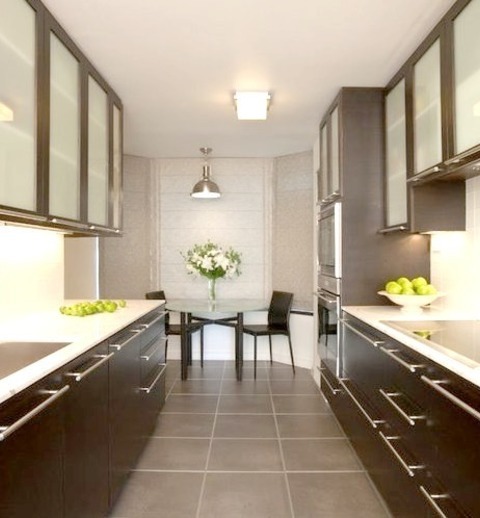
Image of a mid-sized modern galley kitchen with ceramic tile countertops, an undermount sink, flat-panel cabinets, a white or glass backsplash, stainless steel appliances, no island, dark wood cabinets, and marble countertops.
#ceramic tile flooring#dark espresso wood stained#interior architecture#kitchen#opaque white glass cabinets#stainless steel appliances#white statuary marble countertops
0 notes
Text
Pantry in Chicago

Image of a mid-sized modern galley kitchen with ceramic tile countertops, an undermount sink, flat-panel cabinets, a white or glass backsplash, stainless steel appliances, no island, dark wood cabinets, and marble countertops.
#ceramic tile flooring#dark espresso wood stained#interior architecture#kitchen#opaque white glass cabinets#stainless steel appliances#white statuary marble countertops
0 notes
Photo

Closet - Closet Walk-in closet - large gender-neutral marble floor and white floor walk-in closet idea with recessed-panel cabinets and white cabinets
0 notes
Text
Pantry in Chicago

Image of a mid-sized modern galley kitchen with ceramic tile countertops, an undermount sink, flat-panel cabinets, a white or glass backsplash, stainless steel appliances, no island, dark wood cabinets, and marble countertops.
#ceramic tile flooring#dark espresso wood stained#interior architecture#kitchen#opaque white glass cabinets#stainless steel appliances#white statuary marble countertops
0 notes
Photo
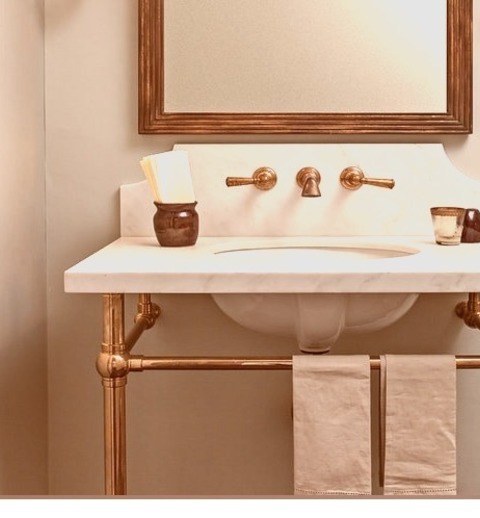
Powder Room Bathroom Houston Example of a classic medium tone wood floor and brown floor powder room design with gray walls, an undermount sink and marble countertops
0 notes
Photo

Kids - Bathroom Bathroom - mid-sized contemporary kids' stone slab and white tile ceramic tile and beige floor bathroom idea with flat-panel cabinets, light wood cabinets, a one-piece toilet, white walls, an undermount sink and marble countertops
0 notes
Photo

Contemporary Kitchen - Kitchen With an undermount sink, shaker cabinets, white cabinets, marble countertops, red backsplash, marble backsplash, stainless steel appliances, a peninsula, and large trendy l-shaped porcelain tile and beige floor enclosed kitchen photo, among other features.
#recessed lighting#glass front upper cabinets#contemporary kitchen#statuary#kitchen backsplash mosaic tile#contemporary style#white marble countertops and backsplash
0 notes
Text
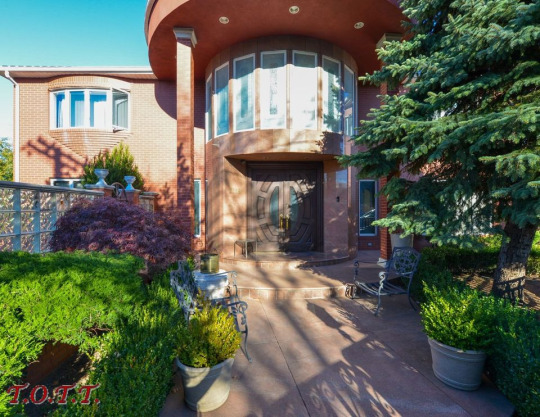
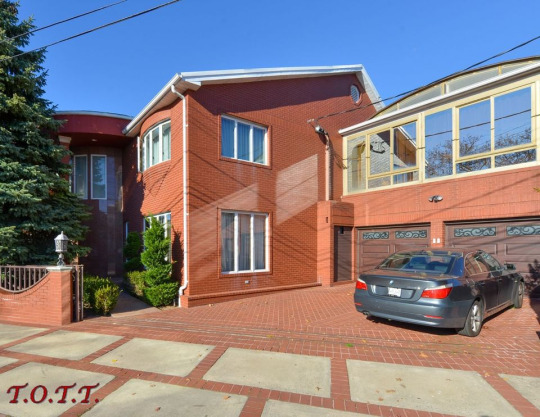
Found this over-the-top elegance 1970 house in Brooklyn, NYC, NY on FB Marketplace. It has 5bds, 3ba, and if you like extreme decor, you'll love it. They're asking $3.279M.
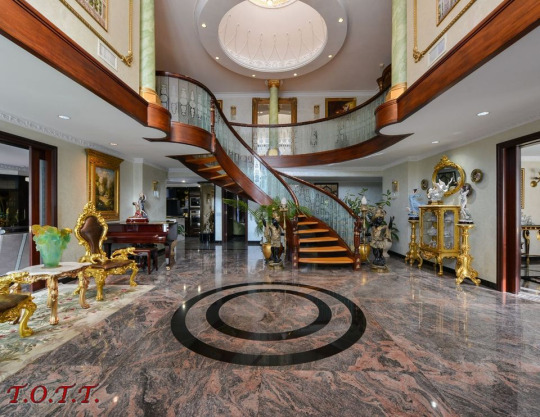
The entrance. Marble floors, huge skylight, and mezzanine w/balconies.
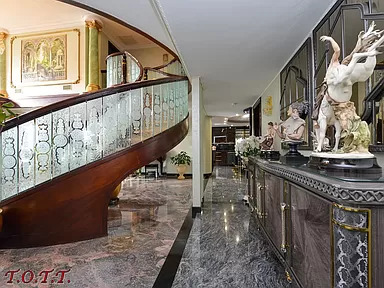
It has solid etched glass instead of balusters in the railing.
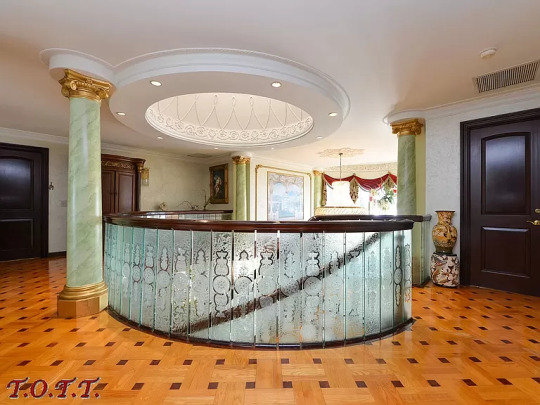
Upstairs there's the illuminated skylight, Greek columns and inlaid wood floors.
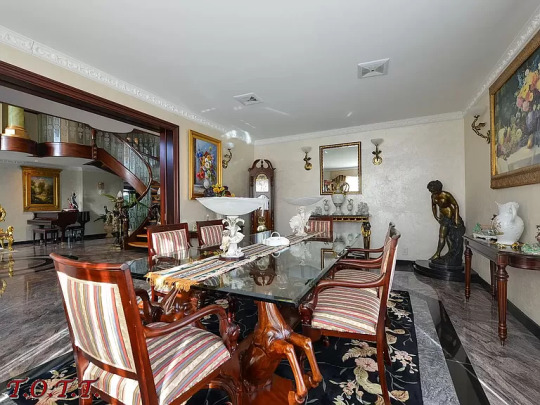
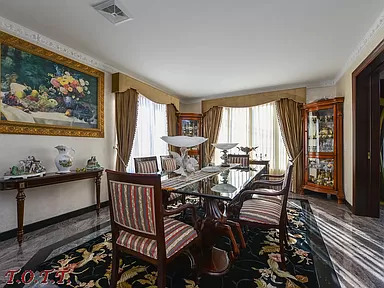
The first room off to the right is a dining room. I don't see anything special- there's no fireplace.
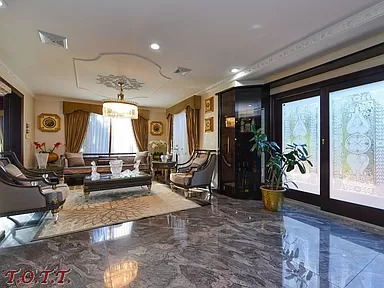
Then, this is the sitting room. Look at that- etched glass in the sliding doors. Still no fireplace and it gets cold in the fall & winter, here.
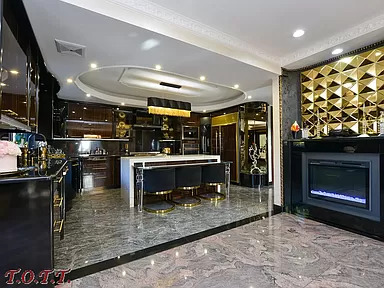
But, you're in for a treat- look at the kitchen fireplace. Amazing gold feature on top.
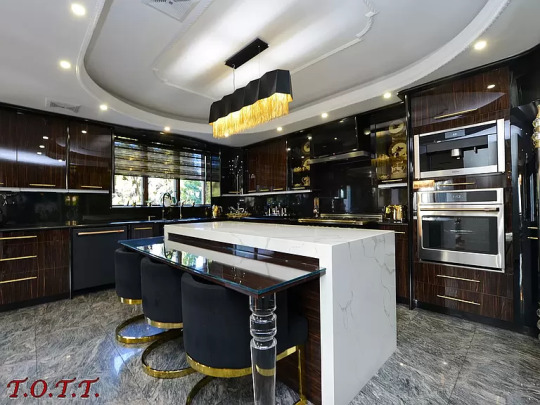
Check out the clear plexiglass legs on the counter. That is so cool.
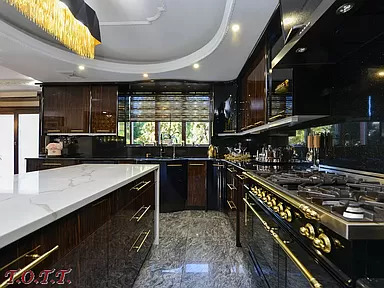
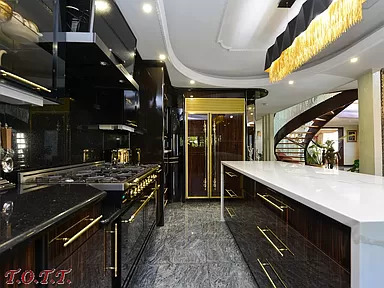
Sleek, shiny black cabinetry, professional stove, and gold accents.
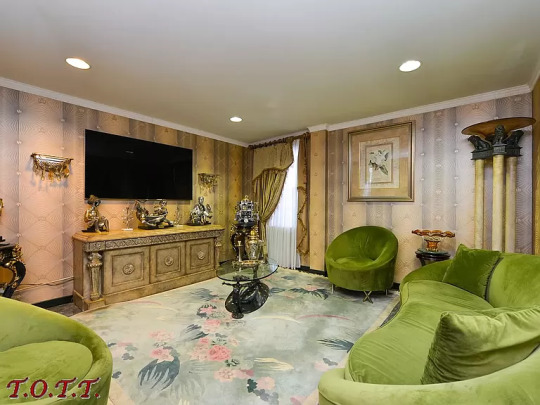
The family room. Still no cozy fireplace.
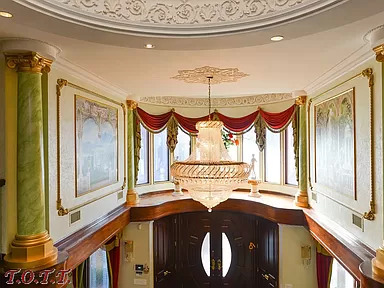
More of the 2nd fl. landing- it's just a shelf - how do you get up there to dust it and the statuary?
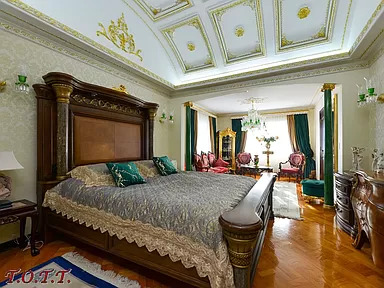
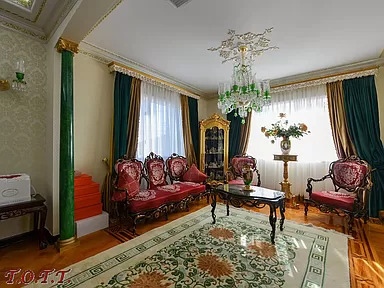
Very large primary bedroom is like 2 rooms in one. Over the bed is a fancy gold-detailed ceiling. (I give up, still no fireplace.)
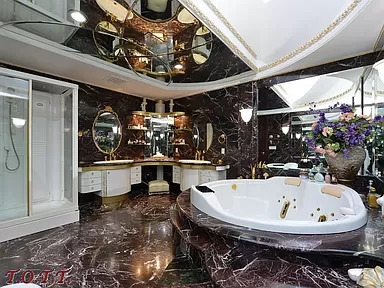
Huge black, white and gold en-suite.
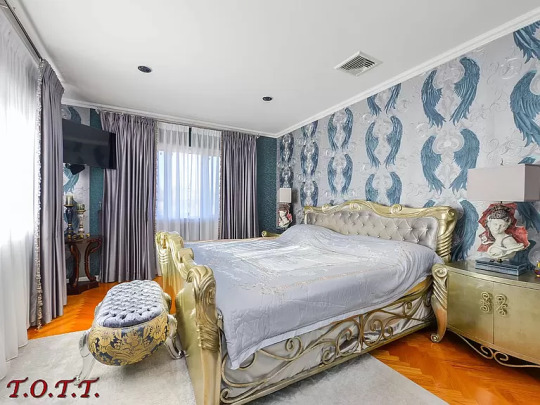
One of the secondary bedrooms.
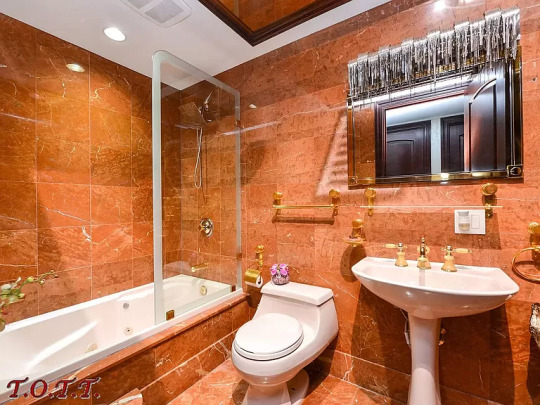
Smaller, 3pc. marble bath.
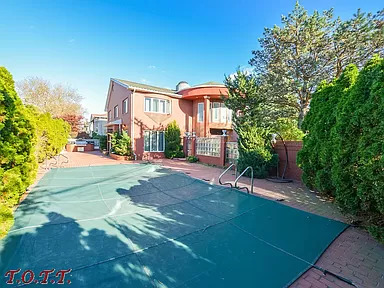
Outside, it does have an inground pool.
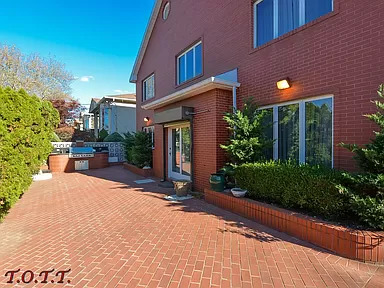
It's been on the market 176 days, so far.
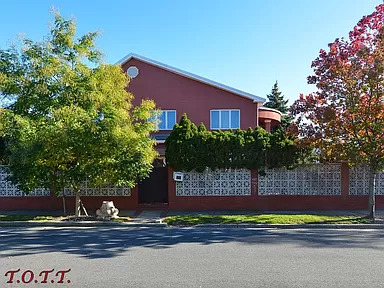
A brick wall with decorative cement blocks surrounds the property.
https://www.zillow.com/homedetails/2759-Whitman-Dr-Brooklyn-NY-11234/30787712_zpid/
51 notes
·
View notes
Text












150 years ago, January 5.1875 Opéra Garnier, Paris was opened.
By ALAN RIDING/ New York Times;June 21, 2000:
PARIS, June 20 -- When Charles Garnier was commissioned to build a new Paris opera house in 1861, his job was to impress, not only his patron Napoleon III and elitist operagoers but also ordinary Parisians who could sense the power of France through the giant building's extravagant facade. Yet in recent decades, the Palais Garnier, as it is known, has impressed mainly with its dark and grimy appearance.
Now, long after most Paris museums and monuments have been given face-lifts, the Palais Garnier's turn has finally come. After a 12-month cleaning and restoration, its facade was formally reopened today by the minister of culture, Catherine Tasca, exposing a dozen gilded busts and statues, multicolored marble pillars, delicate mosaics and almost shockingly white stone. It looks as good -- or as strange -- as the day it was inaugurated in 1875.
In truth, the building has not always been universally loved. Garnier, an unknown 35-year-old architect when he began work on the theater, diplomatically described it as "Napoleon III style," although it is unlike any other building of the era, with its polychromatic facade showing a strong Italian influence.
It was this mixture of styles that brought criticism from some late-19th-century purists. Debussy, for one, said it resembled a Turkish bathhouse.
On the other hand, Hitler, that infamous former Viennese art student, is said to have considered it the world's most beautiful building. Certainly, he made a point of touring it before dawn on the only occasion that he visited Paris just weeks after the city was occupied by German troops in June 1940. From there he went to the Trocadéro, where photographs show him looking at the Eiffel Tower, but the opera house was apparently the city's main attraction for him.
More recently, the Palais Garnier has had to compete for attention with the ultramodern and larger Bastille Opera. Indeed, for five years after the new house opened in 1990, it presented all opera productions, while the Palais Garnier became the home of ballet.
But then the Palais Garnier was remembered. Once its auditorium was restored and its backstage modernized in 1995, it again -- like the Bastille Opera -- combined opera and ballet. And finally $7.7 million was assigned for cleaning its exterior. The building's facade, which still carries the letters E and N for the Emperor Napoleon, was completed in 1867 to coincide with France's first Universal Exhibition.
"I consider the facade to be the most typical and most personal part of the entire project," Garnier wrote. Indeed, he and his wife, Louise, spent months traveling around Italy studying gilding techniques and searching for the 10 different types and colors of marble eventually used on the facade.
But the facade was also the only part of the building that the Emperor would ever see. Construction was halted in 1870 when Prussian troops occupied Paris and Napoleon III fled into exile. The following year, even greater chaos erupted during the popular uprising known as the Commune of Paris.
Yet when Garnier resumed work in 1873, he changed nothing of his plans: the grandiose western entrance, now closed, remained the imperial entrance, while the eastern entrance, also now closed, still shows where the wealthy were supposedly to drive up in their carriages.
Indeed, the entire building was designed for people who went principally to the opera to be seen. Its Italian-style horseshoe auditorium, with some 2,200 seats, was no larger than, say, La Scala or Covent Garden. But the area between the entrance and the auditorium was palatial, dominated by a huge marble staircase and filled with gilded and stone statues scattered through wide corridors and galleries. The Grand Foyer, heavy with neo-baroque statuary and frescoes, was where people gathered in their finery: the intermission was more important than the opera itself.
For the building's restoration, the team of architects, headed by Alain-Charles Perrot, chief architect of France's historic monuments, turned the clock back to Garnier's day.
In some cases, they were able to obtain marble and tesserae for mosaics from the same places and even the same family firms that supplied Garnier 130 or more years earlier. As significantly, they also found French artisans who were able to work gold, bronze and stone in the traditional manner.
A modern sandblasting machine was used to clean the western, northern and eastern sides of the buildings, gradually revealing the stone busts of 24 prominent French musicians and thinkers as well as 38 stone theater masks. But the southern facade had to be worked by hand. Known in French as "Renomées," two groups of large statues presiding over the building and representing Harmony and Poetry had to be entirely dismantled and repaired before they could be regilded.
Above the open-air terrace that looks over the Place de l'Opéra, nine busts of famous composers and librettists of the day, long rendered invisible by pollution, are also now covered with gold leaf. Today, Garnier's choice of who should be so honored seems a tad strange. Mozart, Beethoven and Rossini are there, but so also are Spontini, Meyerbeer, Halévy, Auber, Quinault and Scribe, not exactly creators whose works are featured in the Palais Garnier these days.
The recovery of the terrace, known as the loggia, is one of the achievements of the restoration. In 1977, it was closed for security reasons when pieces of mosaic from its ceiling came unstuck.
Now it has reopened, its multicolored marble floors clean and shiny, its mosaics restored.
To re-enter the opera house from the loggia, though, still presents something of a shock: the Grand Foyer remains murky, its rococo design still carrying the soot of the city.
So the cleanup of the Palais Garnier is not over yet. If it took Garnier 14 years to build the opera house, it will have taken 13 years to fix it up by the time the Grand Foyer, other public spaces and numerous bronze statues at the western and eastern entrances are restored in 2007 at a cost of $40 million more.
This time, though, the authorities have pledged not to let the house fall into disrepair. They can do little about the city's air pollution, but at least they have concluded that maintenance is cheaper than starting afresh a decade or two hence.
#classical music#opera#music history#bel canto#composer#classical composer#aria#classical studies#maestro#chest voice#Opéra Garnier#Charles Garnier#Paris Opera#The Palais Garnier#Opéra National de Paris#Opéra de Paris#Architect#Opera House#theatre#Foyer#classical musician#classical musicians#classical history#history of music#historian of music#musician#musicians#diva#prima donnna#architecture
6 notes
·
View notes
Text
Legend of Zelda Theme Park - Castle Town (UPDATED)

As guests move along the walkway at the back of the Welcome Plaza, the noncommittal park ambience is gradually overtaken by facades of old-fashioned half-timber houses, and then masonry castle walls. Finally they arrive at a grand archway with ornate double gates flung open to welcome visitors. Atop the archway sits a picturesque train station, and beyond it is a bustling medieval(-ish) market square of cobblestones, storefronts, gaming booths, and more. In the center is a large marble fountain bearing a sculpture of the Triforce, and on the far side of the square, opposite the entry point, is Hyrule Castle at the end of an avenue lined with trees and statuary. To the right of the castle from the point of view as you enter the area, a cathedral-like structure can be seen rising behind the rooftops. The area music loop consists of a collection of “main town,” shop, and minigame themes from across the franchise.
Castle Town, besides having plenty to do in its own right, serves as the “hub” area of the theme park, with walkways leading directly to three of the other areas (besides the Welcome Plaza) and indirect paths to the others via a ride.

Attractions
Spirit Train Grand Central Station: The Spirit Train is a handy and scenic way to get around the theme park, encircling the central portions on an elevated track, with several stops along the route. Some of the sights in Hyrule can only be seen from aboard the train!
Carnival Games: Most of the central portion of Market Square is occupied by game booths, evoking the numerous “mini-games” found in most LoZ titles. The games themselves are of fairly standard types, but the paraphernalia are all themed like items from the franchise—as just one example, instead of throwing a mere baseball at a target, you throw a “Cucco” (even if it is just a baseball with a chicken face and wings printed on it). Rather than paying cash to play, guests pay “rupees” from a debit card they can get from a vending machine, and the more you put on the card, the more bang for your buck you get—say, five dollars gets you 100 rupees, but twenty gets you 500, and higher amounts net further price breaks. The games themselves cost anywhere from 25 to 100 rupees per play. Prizes are the usual small plush toys and cheap trinkets you would expect, but you can bank wins on your “rupee wallet” card and redeem them for better things if you so choose.
Link and Zelda Meet-and-Greet: What theme park would be complete without an opportunity to meet the star characters? The Hero Link and Princess Zelda can be found in dedicated meet-and-greet spaces on the ground floor of Hyrule Castle. Both characters have undergone many design changes over the course of the series, but by default they appear in something close to their classic, iconic looks. Link gets his green tunic and stocking cap, white leggings, and brown leather arm guards, with a bright but not glaring color palette and more fine detailing than most video game hardware can consistently render. Zelda’s look varies a lot more from game to game, but common features include a white underdress and pink or mauve pinafore-like outer layer with gold embroidery, as well as long blond hair and a distinctive tiara. The objective is to present the theme park itself as an installment in the franchise, with its own story (that you, the guest, create as you go) and details, and its own incarnations of the Hero and the Princess.
Hyrule Castle Gardens: Across from the meet-and-greet spaces, archways lead out into a peaceful courtyard space of flower beds, benches, fountains, and topiary sculptures of familiar creatures from the games, backed by a soft music loop of leitmotives for the game series’ many princesses, love interests, and other gentle, feminine characters. This attraction serves the vital function of relaxation, giving guests an opportunity to take a load off for a while in a tranquil setting.
Temple of Time Theatre: In the back corner of Castle Town, alongside one of the walkways leading to Death Mountain, is a sizable performance venue. The daytime program consists of 30- to 45-minute plays summarizng the plots of actual games, both for entertainment and so non-fans can get some idea of what the big deal is. “Here at the Temple of Time, we can see all across the history of Hyrule and beyond and tell you the legends as they actually happened!” While waiting for the show to begin, guests can enjoy a musical playlist alternating the Temple of Time theme with the score from various “telling a story/recapping a legend” cutscenes. In the evenings, some of the seating area is converted into a dance floor and the plays are traded for mini-concerts by local folk rock bands (and of course, each set includes a cover of at least one iconic LoZ score piece).
Shops
6. Pictobox Shop: If you got your picture taken by a park employee near the main entrance, you can swing by here later in the day to buy prints, perhaps in a nice souvenir frame, or installed in a commemorative keychain.
7. Curiosity Shop: The one in Clock Town may be an outlet for goods of shady provenance, but here, it sells a variety of interesting knickknacks and curios, all guaranteed to be above board.
8. Coro’s Lantern and Oil Shop: This cozy shop offers a selection of wax and LED candles, oil lamps and fuel, scented oil diffusers, and even a unique line of Legend of Zelda-inspired scented soy wax jar candles.
9. Enchanted Kingdom Treasures: Another knickknack shop, this one more targeted to fantasy fans. Some of the items here, from dragon figurines to sword-shaped letter openers, are LoZ-branded, while others are more generic.
10. S*T*A*R*S: Inspired by a minigame in Twilight Princess, this dimly lit tent sells a number of light-up souvenirs, laser-cut crystal sculptures with LED-illuminated stands, and similar tchotchkes.
11. Madame Couture’s: Hytopia’s #1 couturier has her own shop branch here, where guests can buy anything from a simple souvenir tee-shirt to a luxurious fantasy gown, and much, much more!
12. Happy Mask Shop: Named for the innocuous shop in Ocarina of Time that became the founding premise for an entire sequel game, this shop sells licensed masks, hats, and other costume pieces to enhance each guest’s heroic adventure.
13. Badge Market: A shop to buy and trade collectible enamel pins, based on the one of the same name in in Hyrule Warriors. Rather than the endless rows of character images one might expect, pin designs in this theme park focus on iconic emblems from the game franchise, such as the royal crest, symbols of the different peoples of Hyrule, medallions and shields, etc.
Eateries
14. Food Stalls: Interspersed among the game booths in the central portion of the square are booths selling the kind of quick bites you can find at carnivals and farmer’s markets.
15. Potion Hut: A juice and smoothie bar/service counter. Choose from among a wide array of bottled beverages—from common soda brands, water, juice, tea, etc. to unique blends labeled as “health potions,” “energy elixirs,” and other in-universe concepts—or have your own favorite mix made to order!
16. Stock Pot Inn: A buffet restaurant with a menu of hearty soups and stews and flavorful salads.
17. Royal Banquet Hall: An elegant table-service restaurant located on the upper level of Hyrule Castle. It’s pricey and requires a reservation, but it’s worth it for the Breath of the Wild/Tears of the Kingdom-inspired menu served in a regally appointed dining room with spectacular window and balcony views of the park. The interior décor features tapestries, paintings, and stained-glass windows depicting iconic LoZ scenes rendered in genuine medieval and Renaissance art styles.
Miscellaneous
After dusk, the Triforce fountain in the center of the area puts on a little light show every 15 minutes.
Paths to the other themed areas in the park can be found in the side alleys encircling Market Square, but that’s not the only reason to explore them! They contain many secrets, some of which are related to the phone app-based minigames.
8 notes
·
View notes
Text

Aidan Wailing Wall, 2014 - 2015 White Statuary Marble
32 notes
·
View notes
Text
Grand Palace and Ravkan Royal Family
Siege and Storm- Chapter 12
Ordinarily, the royal family would have spent the hot months at their summer palace in the lake district. But Os Alta was more easily defended, and they’d chosen to hunker down behind its famous double walls. ... ... Os Alta, the Dream City, its spires white and jagged against the cloudless sky. ... “I thought you’d be in Caryeva for the races.” ... We crossed the wide canal and left the noise and tumult of the lower town behind. I noticed that the bridge’s gatehouse had been heavily fortified, but when we reached the far bank, it seemed that nothing in the upper town had changed. The broad boulevards were spotless and serene, the stately homes carefully maintained. We passed a park where fashionably turned out men and women strolled the manicured paths or took the air in open carriages. Children played at babki, watched over by their nannies, and a boy in a straw hat rode by on a pony with ribbons in its braided mane, the reins held by a uniformed servant. ... ... we reached the golden gates of the Grand Palace. ... When we reached the double eagle fountain, Tolya helped me from my horse. I squinted up at the Grand Palace, its gleaming white terraces crammed with layer after layer of gold ornament and statuary. It was just as ugly and intimidating as I remembered. Vasily handed the reins of his mount to a waiting servant and headed up the marble steps without a backward glance. ... Inside, the halls of the palace were silent as we passed from room to glittering room. Our footfalls echoed on the polished parquet... ... A long, pale blue carpet stretched the length of the room. At the end of it, a group of elegantly dressed courtiers and advisers milled around a raised dais. Above them all sat the King and Queen of Ravka, on matching golden thrones.
#Grishaverse#S&S Chapter 12#Ravka#Grand Palace#Os Alta#Lantsovs#Caryeva#writing reference#grishanalyticritical#Siege and Storm#Grisha trilogy#V#books#quotes#Leigh Bardugo
15 notes
·
View notes